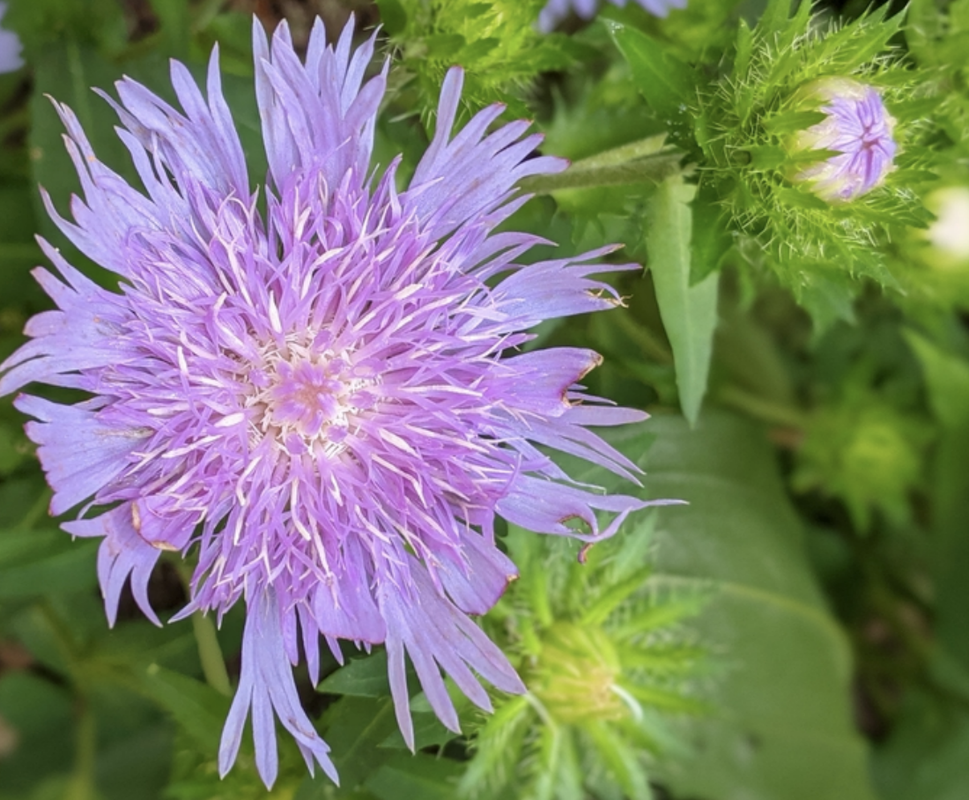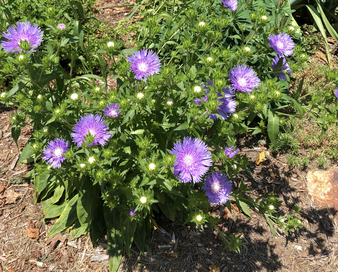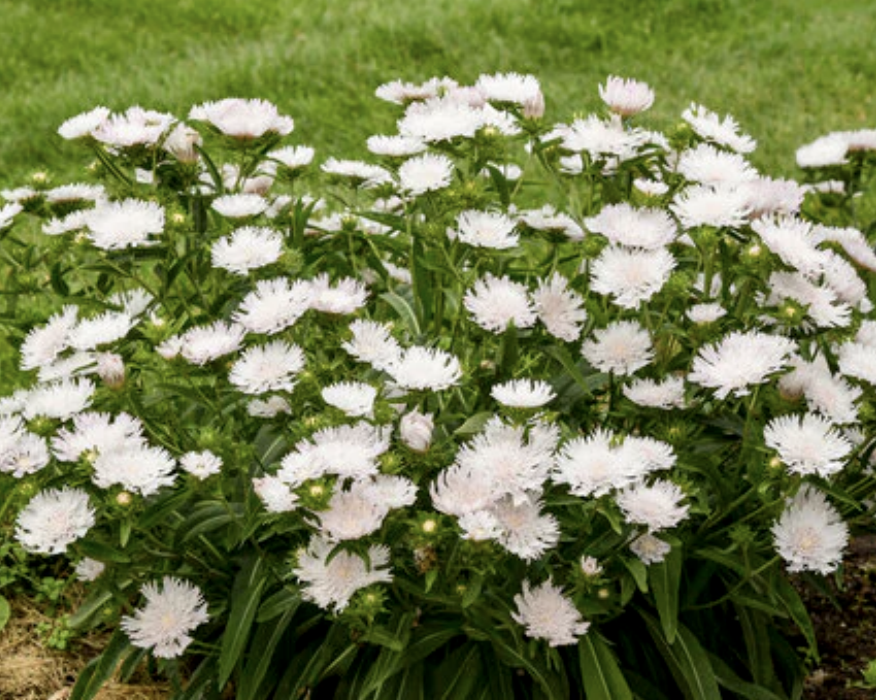|
Gardeners deal with a lot of challenges, from weather to pests to soil issues, in order to get their plants to thrive. It seems like many of our favorite plants are finicky to at least a moderate degree, so it's always nice to find plants that are relatively easy to grow. Given that, imagine if I told you there is a perennial plant with a fairly extended bloom time throughout late summer and early spring, that is tolerant of drought and able to stand periods of excessive moisture. In addition, the plant is resistant to damage from deer and rabbits, and also free from any significant disease or insect pests. You’d probably want that plant for your garden, right? I thought so. That plant, or one of perhaps several that fit that bill, is Stokesia laevis or Stoke’s aster. Stoke’s aster is a member of the Asteraceae (daisy) family. Unlike other asters it does not wait until fall to bloom, but it does have a classic daisy-like flower with a disc like center from which petals radiate. Stoke’s aster is typically blue in bloom, though flower color can also include white, pink, or purple, depending on the variety. Flowers are lightly fragrant and typically appear in early May and last through June. Deadheading is not essential, but will often extend the bloom period even longer. Stoke’s aster is a low-growing perennial, typically with a height of about 1-2 feet with a similar spread. As such, it’s a good idea to place along borders or edges of garden spaces or mixed amongst other perennial plants of roughly similar height. It can tolerate a bit of shade, so having a few taller plants nearby that cast a brief shadow is fine, but it prefers mostly sun and will flower best when provided with full sun. It is native to the southeastern United States, and a great nectar source for a number of bee and butterfly species.
to the color of the bloom, but to the female botanist from Mississippi who discovered it, Peachie Saxton. Rosea’ is a pink-blooming variety, ‘Alba’ and ‘Silver Moon’ have white flowers, and ‘Mary Gregory’ blooms yellow. Any of these make great additions to perennial gardens, native plant or wildflower collections, and cottage gardens. Matthew Stevens is the County Extension Director and Horticulture Agent for North Carolina Cooperative Extension’s Pitt County Center. If you have questions about this article or gardening in general, please contact the Pitt County Extension Master Gardener Infoline at 252-902-1705.
0 Comments
Leave a Reply. |
Matt Stevens
Pitt County Extension Director & Horticulture Agent Archives
July 2024
Categories |




 RSS Feed
RSS Feed